Winter bud-key for Dutch hardwoods.
Buds in winter.
This page shows tree-buds in winter by simply showing photographs. It should not be seen as a key in itself, but as a part of the whole winter-key. The winter key part one is the elimination winter key. The third part is the bark key..
Buds of trees are good characteristics to use for determination. There seems to be little variation between individuals in a species. At the end of the winter however buds do change form and size as they are almost becoming leafs or flowers. Many buds harbor both leafs and flowers by the way. In some species there are different flower-buds and leaf buds (Elms for instance).
Having said that we order the photo's in the following way:
1. Buds come in bunches |
2. Bud is red |
3. Bud is very green |
4. Bud is a bit green with red |
5. Bud is very black |
5. Bud is very large, brown and sticky |
6. Bud is a round ball |
7. Bud is oblong and brown/green/red |
8. I see no buds |
9. There are buds but no class fits
10. Buds of easily recognizable trees.
Because there are not too many photo's my aim is you look at them all. The classification is more to bring some structure to the page, not a water-tight logical key.
1. Buds come in bunches
-
English oak Quercus robur (Zomereik)

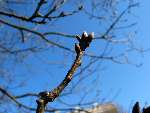
-
Red oak Quercus rubra (Amerikaanse eik)


-
Sweet cherry Prunus avium (Zoete kers)



English oak Quercus robur (Zomereik)


Red oak Quercus rubra (Amerikaanse eik)


Sweet cherry Prunus avium (Zoete kers)



2. Bud is red
-
Norway maple Acer platanoides (Noorse esdoorn)


-
Sweet chestnut Castanea sativa (Tamme kastanje)




-
Lindengenus or Tilia (Tilaceae)





3. Bud is very green
-
Sycamore maple Acer pseudoplatanus (Gewone esdoorn)




4. Bud is a bit green with red
-
London planetree Platanus hybrida (Gewone plataan)

of -
London planetree versus Oriental planetree. The big buds in the front are Oriental, the smaller buds the London planetree.
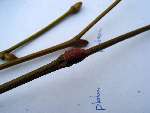
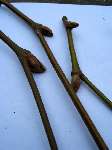
-
Sweetgum Liquidambar styraciflua (Amberboom)




-
Silver linden Tilia tomentosa


5. Buds is very black
Common ash Fraxinus excelsior (Gewone es)



5. Bud is very big, brown and sticky
Horse chestnut Aesculus hippocastanum (Witte paardenkastanje) or Red horse chestnut Aesculus x carnea (Rode paardenkastanje)




6. Bud is a round ball
Elm genus or Ulmus (Ulmaceae)



7. Bud is oblong and brown/green/red
-
European beech Fagus sylvatica (Beuk)
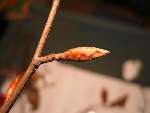
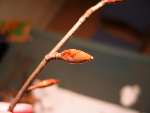
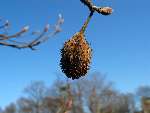
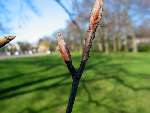
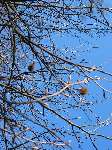
-
European hornbeam; Musclewood; Ironwood Carpinus betulus (Haagbeuk)




-
Willow genus or Salix (Salicaceae)



-
Common Walnut, Black Walnut Juglans regia Okkernoot (walnoot)




-
Manna Ash, or Flowering Ash Fraxinus ornus (Pluimes)



-
Poplar genus or Populus (Salicaceae) Canada group/

-
Caucasian Wingnut Pterocarya fraxinifolia (Gewone vleugelnoot)


-
Tuliptree or Liriodendron tulipifera


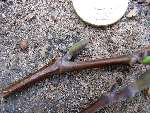

-
Katsura tree or Cercidiphyllum japonicum


-
Lombardy poplar Populus nigra Italica Italiaanse populier





-
Birch genus or Betula (Betulaceae) .


-
Grey poplar Populus canescens Grauwe abeel


-
Common alder; European alder; Black alder Alnus glutinosa Zwarte els

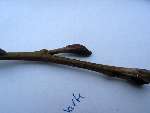

-
Common alder; European alder; Black alder Alnus glutinosa VERSUS
Alnus speathii Alnus speathii JapanseXKaukasische els
Black alder has black/grey big flat clam-shaped buds where speathii has small green buds.






8. No buds
The Black locust Robinia pseudoacacia for instance and also honeylocust.
